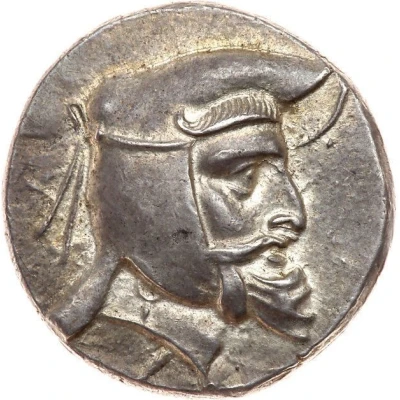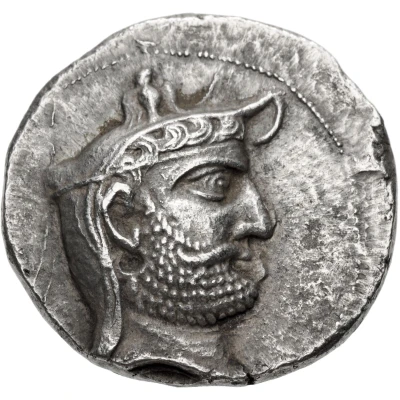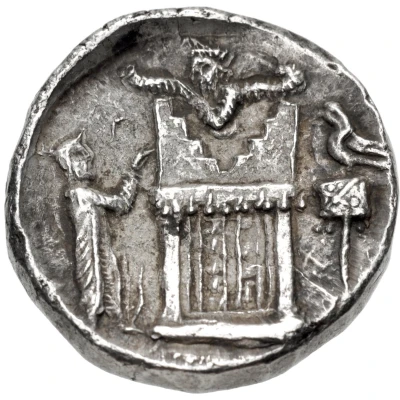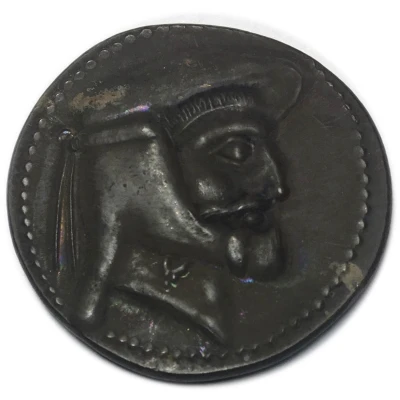
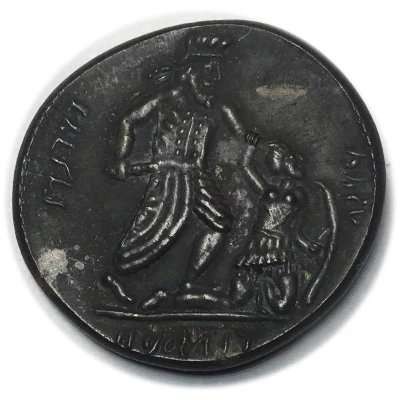

© samei (CC BY)
Tetradrachm - Oborzos 200 BC - 191 BC
| Silver | 16.02 g | 28 mm |
| Issuer | Kingdom of Persis (Persian Empires) |
|---|---|
| Dynast | Wahbarz (Oborzos) (Early 2nd-century BC) |
| Type | Circulating commemorative coin |
| Years | 200 BC - 191 BC |
| Value | Tetradrachm (4) |
| Composition | Silver |
| Weight | 16.02 g |
| Diameter | 28 mm |
| Shape | Round (irregular) |
| Technique | Hammered |
| Orientation | Medal alignment ↑↑ |
| Demonetized | Yes |
| Updated | 2024-10-10 |
| Numista | N#430058 |
|---|---|
| Rarity index | 100% |
Reverse
King standing right wearing kidaris and kandys (special clothes for Achaemenid kings), preparing to slay captive Greek warrior (katoikoi) with a shield in his left hand.
Script: Aramaic
Translation: Wahbarz was/may be victorious, (he) who (is) the commander [the karanos (κἀρανος)]
Interesting fact
One interesting fact about the Tetradrachm - Oborzos coin is that it features an image of a Persian king, possibly Artaxerxes II, on one side, and a depiction of the Persian goddess Anahita on the other. Anahita was revered as a symbol of fertility, prosperity, and wisdom, and her presence on the coin highlights the importance of these values in Persian culture.
